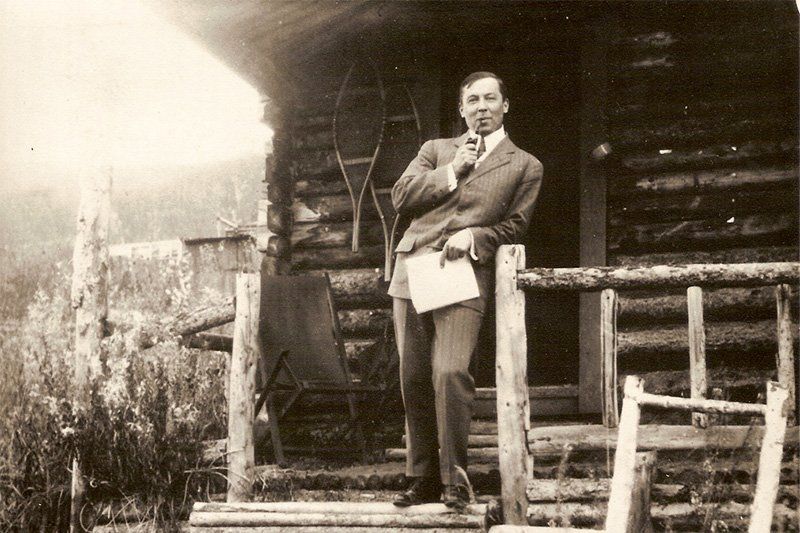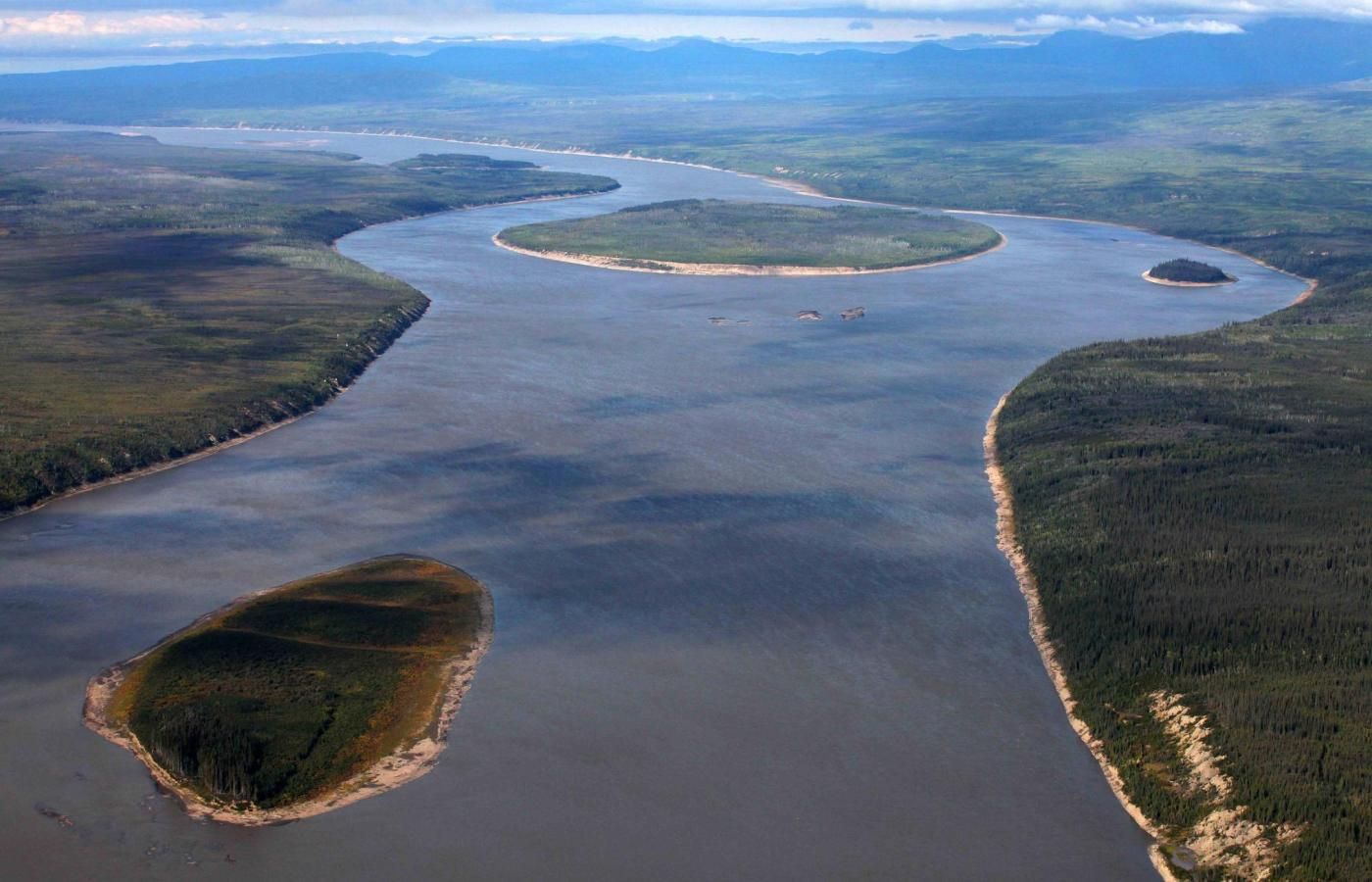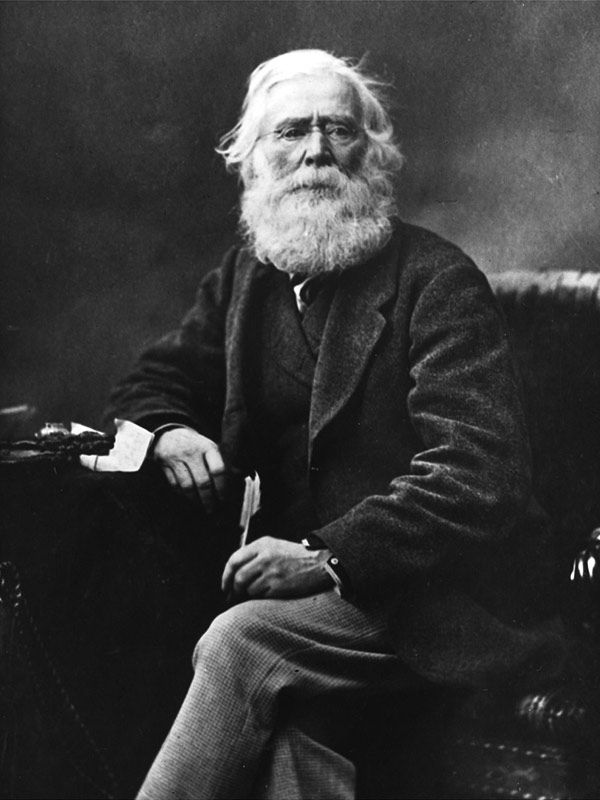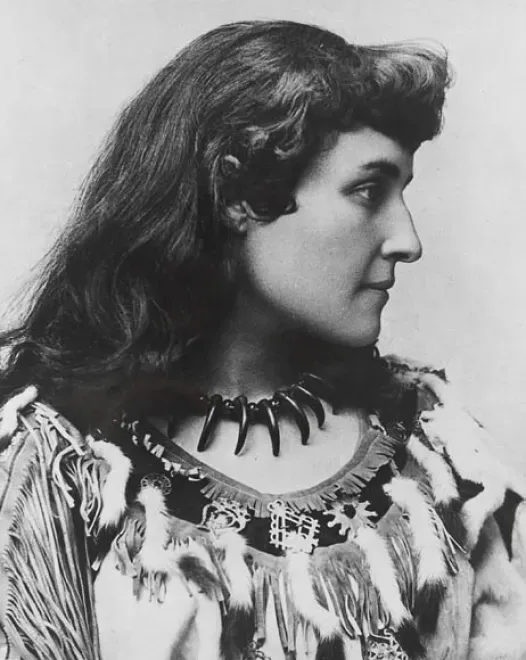A Famous Canadian Citizen: Robert Service (1874-1958)
Robert Service, known as the “Bard of the Yukon,” immigrated to Canada from Scotland in 1895. His poems are still read in schools across Canada to this day. The Canadian citizenship test has questions about his life.

All blog articles reference persons and/or historic sites and events that are cited in the Discover Canada Study Guide and include relevant information necessary for Canadian Citizenship test preparation.
When he arrived, he took a train from Montreal to Vancouver Island. He traveled around western North America, wandering from California back to British Columbia working on cowboy ranches and whatever employment he could find, meeting many colorful personalities who eventually found their life stories in his written works.
Early Days
In 1903, he was hired by a Canadian Bank of Commerce branch in Victoria, British Columbia. He lived in an apartment above the bank until he was transferred to the Canadian Bank of Commerce in Whitehorse, Yukon in 1904.
Whitehorse was a young frontier town, located on the Yukon River. It began as a campground for prospectors in 1897 as they made their way to Dawson City to join the Klondike Gold Rush. The railroad had reached Whitehorse in 1900, winding its way through the rough terrain and mountain passes. The new Canadian citizen was able to travel on the recently constructed railroad when he received his transfer to the Yukon.
Inspiration For Writing
Robert Service was inspired by the many adventure stories told about the great gold rush. He once heard a gold rush yarn from a Dawson mining man about a fellow who evidently cremated his pal.
Evidently, Sam McGee left his southern home in Tennessee in a frantic search for gold. After spending some time in the north, he realized his dream for gold would not happen. He was unbearably cold all of the time and knew he would soon die. He asked his friend to cremate him in the boiler fire of an old derelict boat, the Alice May, that was stuck in the ice of Lake Lebarge.
From this story, he wrote, “The Cremation of Sam McGee.” It is a ballad, or a narrative poem with 14 stanzas. The first stanza follows:
The Cremation of Sam McGee:
There are strange things done in the midnight sun
By the men who moil for gold;
The Arctic trails have their secret tales
That would make your blood run cold;
The Northern Lights have seen queer sights,
But the queerest they ever did see
Was that night on the marge of Lake Lebarge
I cremated Sam McGee.”
This poem was one of his most popular. It has been read through the years by young and old alike. Service was able to capture the experiences of the old gold rush miners in verse format that brought authenticity to life during that unique time in our early Canadian history.
Within a few years, his renown as a writer was well established, and publishers in New York and London could not keep up with the demand for his book, “Songs of a Sourdough,” which was renamed, “The Spell of the Yukon and Other Verses.”
Taking A Job In Toronto
Service left the North in 1912, moved to Toronto and became a correspondent for the Toronto Star. He eventually moved to Paris. He was 40 when World War I broke out. He worked as a stretcher bearer and ambulance driver with the Ambulance Corps of the American Red Cross. He also worked as a war correspondent. After the war he published Rhymes of a Red Cross Man. As a result of his war service, he received three medals.
Following World War I, Service began writing thriller novels. Two of his books were made into movies. He was able to get an acting part, appearing briefly opposite Marlene Dietrich in the 1942 movie,
The Spoilers.
Robert Service has been honoured as a great Canadian citizen with schools named for him and his picture was on a Canadian postage stamp in 1976. Additionally, the Bard & Banker public house in Victoria is dedicated to him, the building having at one time been a Canadian Bank of Commerce branch where Service was employed.
Joy Dirks
October, 2022


Disclaimer: Joy does not provide citizenship consulting or advising services pertaining to a citizenship application. Her services are focused entirely on teaching and reviewing material found in: Discover Canada: The Rights & Responsibilities of Citizenship.
Canadian Citizenship Test Prep
Providing Teaching Services Across Canada

